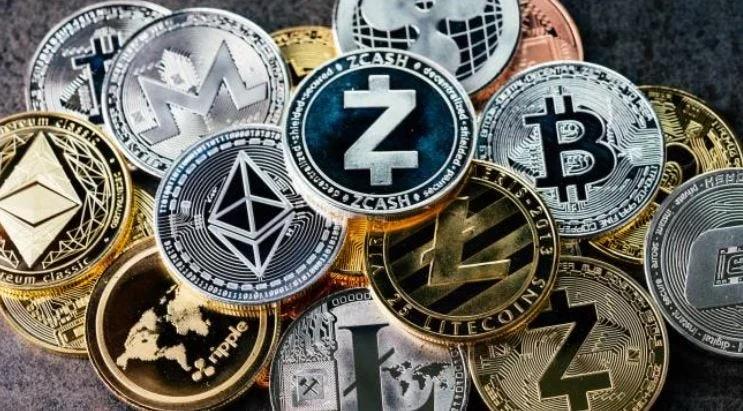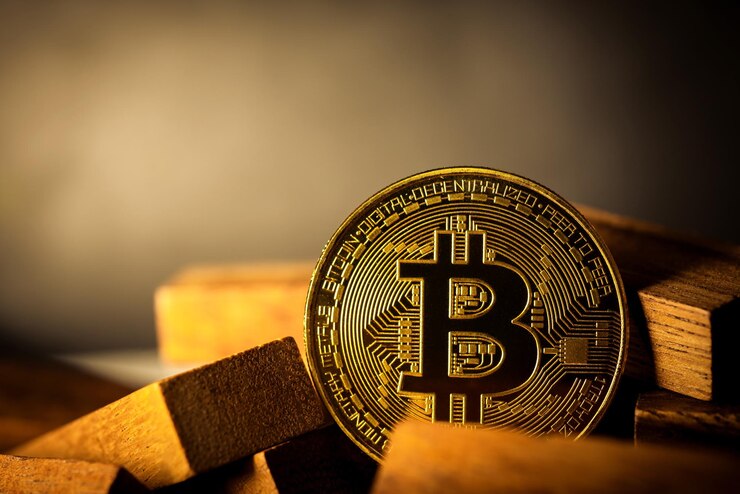Cryptocurrencies have revolutionized the financial landscape, with Bitcoin leading the charge since its inception in 2009. However, Bitcoin is just the tip of the iceberg in the vast ocean of digital currencies. Enter Altcoin—a term that encompasses all cryptocurrencies other than Bitcoin. This comprehensive guide aims to provide a detailed overview of Altcoins, their types, functionalities, benefits, risks, and future potential. Whether you are a seasoned crypto enthusiast or a curious newcomer, this article will equip you with essential knowledge about Altcoins.
What is an Altcoin?
The term Altcoin is a portmanteau of “alternative” and “coin.” It refers to all cryptocurrencies and digital tokens that are not Bitcoin. Since Bitcoin’s launch, thousands of alternative cryptocurrencies have emerged, each aiming to improve upon or differentiate from Bitcoin in various ways. Altcoins can vary significantly in terms of technology, purpose, consensus mechanisms, and market potential.
The Evolution of Altcoins
Early Beginnings
The first Altcoin, Namecoin, was introduced in April 2011. Namecoin aimed to decentralize domain name registration, providing censorship resistance and increased security. Although Namecoin didn’t achieve widespread adoption, it paved the way for other innovative Altcoins.
The Rise of Ethereum
One of the most significant milestones in the Altcoin market was the launch of Ethereum in 2015. Created by Vitalik Buterin, Ethereum introduced the concept of smart contracts, which are self-executing contracts with the terms directly written into code. This groundbreaking technology enabled the development of decentralized applications (DApps) and became the foundation for numerous Altcoins and blockchain projects.
The ICO Boom
The Initial Coin Offering (ICO) boom of 2017 saw an explosion of new Altcoins entering the market. Startups used ICOs to raise funds by issuing their own tokens, often built on the Ethereum blockchain. While many projects were legitimate and innovative, the period also witnessed a surge in fraudulent schemes, leading to increased regulatory scrutiny.
Types of Altcoins
Altcoins can be categorized based on their functionalities and underlying technologies. Here are some common types:
Payment Coins
Payment coins aim to facilitate digital transactions, often with faster transaction times and lower fees compared to Bitcoin. Examples include Litecoin (LTC), Bitcoin Cash (BCH), and Dash (DASH).
Stablecoins
Stablecoins are designed to maintain a stable value by pegging them to a reserve asset, such as the US dollar or gold. They provide the benefits of cryptocurrencies without the volatility. Popular stablecoins include Tether (USDT), USD Coin (USDC), and Dai (DAI).
Utility Tokens
Utility tokens provide access to a product or service within a blockchain ecosystem. They are often used to pay for transaction fees or as a medium of exchange within a specific platform. Ethereum (ETH) and Binance Coin (BNB) are prominent examples.
Security Tokens
Security tokens represent ownership in an asset, such as shares in a company or real estate. They are subject to regulatory requirements and offer potential dividends or profit-sharing. Examples include Polymath (POLY) and tZERO (TZRO).
Governance Tokens
Governance tokens enable holders to participate in the decision-making process of a blockchain project. These tokens are often used in decentralized finance (DeFi) platforms to vote on proposals and changes to the protocol. Maker (MKR) and Compound (COMP) are notable governance tokens.
Meme Coins
Meme coins are inspired by internet memes and often start as jokes but can gain substantial popularity and market value. Dogecoin (DOGE) and Shiba Inu (SHIB) are famous examples of meme coins.
How Altcoins Work
Blockchain Technology
Like Bitcoin, most Altcoins operate on a blockchain—a decentralized ledger that records all transactions across a network of computers. Each block contains a list of transactions and is linked to the previous block, forming a chain. This structure ensures transparency, security, and immutability.
Consensus Mechanisms
Consensus mechanisms are protocols that validate transactions and maintain the blockchain’s integrity. Here are some common consensus mechanisms used by Altcoins:
Proof of Work (PoW)
Used by Bitcoin and many Altcoins, PoW requires miners to solve complex mathematical puzzles to validate transactions and create new blocks. While secure, PoW is energy-intensive.
Proof of Stake (PoS)
PoS requires validators to hold and lock up a certain amount of cryptocurrency as collateral to validate transactions. This method is more energy-efficient than PoW. Ethereum 2.0 and Cardano (ADA) use PoS.
Delegated Proof of Stake (DPoS)
DPoS allows token holders to vote for a small number of delegates who validate transactions and create blocks. This system aims to improve efficiency and reduce centralization. EOS and TRON (TRX) use DPoS.
Practical Byzantine Fault Tolerance (PBFT)
PBFT is designed to handle Byzantine faults in a distributed network, ensuring consensus even if some nodes act maliciously. Hyperledger Fabric and Zilliqa (ZIL) use PBFT.
Advantages of Altcoins
Innovation and Diversity
Altcoins introduce new technologies and use cases that enhance the cryptocurrency ecosystem. From smart contracts to privacy features, Altcoins push the boundaries of what’s possible in the digital currency space.
Faster Transactions
Many Altcoins offer faster transaction times and lower fees compared to Bitcoin. For instance, Litecoin’s block generation time is four times faster than Bitcoin’s, resulting in quicker confirmations.
Reduced Volatility
Stablecoins provide a haven for investors during market volatility by maintaining a stable value. This stability can facilitate broader adoption of cryptocurrencies in everyday transactions.
Enhanced Privacy
Privacy-focused Altcoins, such as Monero (XMR) and Zcash (ZEC), offer enhanced anonymity features, protecting users’ transaction details from public scrutiny.
Decentralized Finance (DeFi) Opportunities
DeFi platforms built on Altcoins provide innovative financial services, such as lending, borrowing, and yield farming, without intermediaries. This democratizes access to financial services and can offer higher returns for investors.
Risks and Challenges of Altcoins
Market Volatility
Cryptocurrencies, including Altcoins, are known for their price volatility. While this can offer lucrative opportunities, it also poses significant risks for investors.
Regulatory Uncertainty
The regulatory landscape for Altcoins is continually evolving. Governments and regulatory bodies worldwide are developing frameworks to address issues such as fraud, money laundering, and investor protection. This uncertainty can impact the market and adoption of Altcoins.
Security Concerns
Altcoins can be vulnerable to hacking and other cyber threats. Smart contract bugs, 51% attacks, and phishing scams are common risks that investors and developers must mitigate.
Liquidity Issues
Some Altcoins may suffer from low liquidity, making it challenging to buy or sell large quantities without affecting the market price. This can lead to significant price slippage and increased trading costs.
Technological Risks
As with any emerging technology, Altcoins can face technological challenges. Bugs, network congestion, and scalability issues can hinder the performance and adoption of an Altcoin.
How to Invest in Altcoins
Research and Due Diligence
Before investing in any Altcoin, thorough research and due diligence are crucial. Understand the project’s goals, technology, team, and market potential. Whitepapers, roadmaps, and community forums are valuable resources for gaining insights.
Choosing a Cryptocurrency Exchange
Select a reputable cryptocurrency exchange that supports the Altcoins you wish to invest in. Consider factors such as security features, fees, user experience, and customer support. Popular exchanges include Binance, Coinbase, and Kraken.
Creating a Wallet
A cryptocurrency wallet is essential for securely storing your Altcoins. There are various types of wallets, including hardware wallets (e.g., Ledger, Trezor), software wallets (e.g., Trust Wallet, MetaMask), and exchange wallets. Hardware wallets offer the highest security, while software wallets provide convenience for regular transactions.
Diversifying Your Portfolio
Diversification is a key strategy in managing investment risk. Consider spreading your investment across multiple Altcoins with different use cases and technologies. This can help mitigate potential losses from a single underperforming asset.
Staying Informed
The cryptocurrency market is dynamic and rapidly evolving. Stay informed about market trends, regulatory developments, and technological advancements. Follow reputable news sources, join community forums, and engage with social media channels to stay updated.
The Future of Altcoins
Technological Advancements
The Altcoin market is poised for continued innovation. Emerging technologies such as sharding, layer-2 solutions, and cross-chain interoperability aim to address scalability and efficiency challenges. These advancements can enhance the performance and adoption of Altcoins.
Institutional Adoption
Institutional adoption of cryptocurrencies is on the rise. Major financial institutions, hedge funds, and corporations are increasingly recognizing the potential of Altcoins as investment assets and means of payment. This trend can drive mainstream acceptance and market growth.
Regulatory Clarity
As regulatory frameworks mature, the Altcoin market can benefit from increased legitimacy and investor confidence. Clear regulations can provide guidelines for compliance, protecting investors and fostering innovation.
Integration with Traditional Finance
The integration of Altcoins with traditional financial systems can create new opportunities for financial inclusion and efficiency. Central bank digital currencies (CBDCs) and blockchain-based financial services can bridge the gap between traditional finance and the decentralized world.
Sustainable Development
Environmental concerns surrounding PoW cryptocurrencies have led to a push for more sustainable alternatives. PoS and other energy-efficient consensus mechanisms can reduce the environmental impact of Altcoins and contribute to a more sustainable future.
Conclusion
Altcoins represent a diverse and dynamic segment of the cryptocurrency market, offering innovative solutions and opportunities beyond Bitcoin. From payment coins and stablecoins to DeFi platforms and privacy-focused tokens, Altcoins cater to a wide range of use cases and investor preferences. However, investing in Altcoins requires careful research, risk management




0 Comments